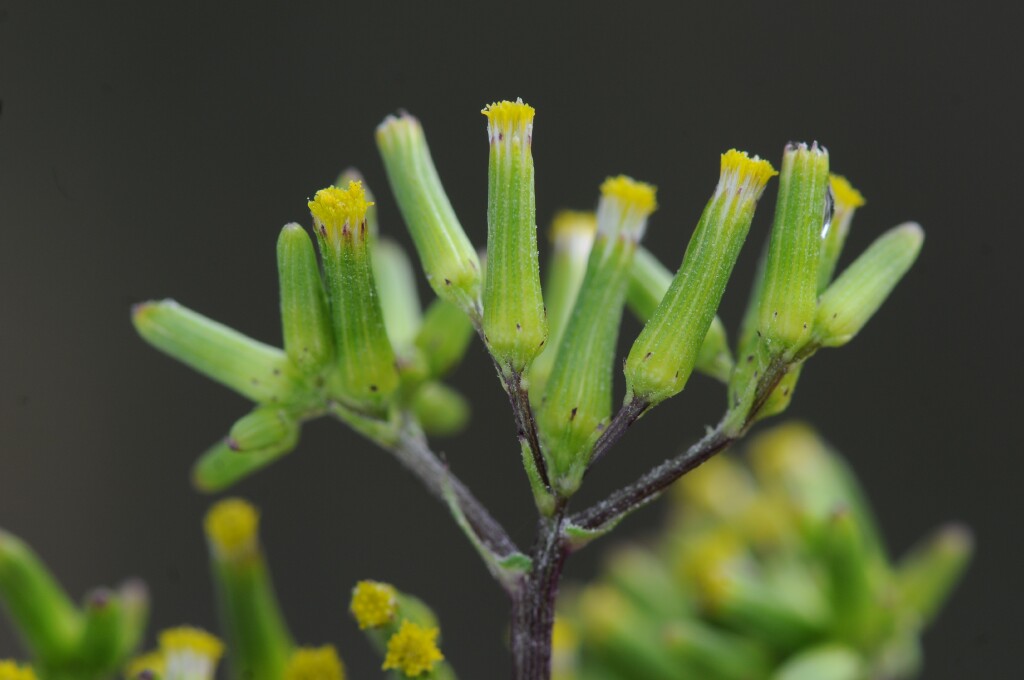Senecio picridioides
(Turcz.) M.E.Lawr.Erect, short-lived annual 15–60(–90) cm high, usually unbranched below inflorescence; stems and leaf undersurfaces (at least toward base of plant) purplish-red. Leaves sessile (the lowest sometimes pseudopetiolate), auriculate, obovate to c. oblong in outline, 6–10 cm long, 1–4 cm wide, coarsely pinnatifid with the lobes denticulate to biserrate; surfaces usually shortly hispid. Inflorescence corymbose, 3–15 cm across, with c. 20–200 capitula; capitula non-radiate; involucre cylindric, 6–7.5 mm long, glabrous; bracts 6–8; bracteoles present; florets c. 16–25, bisexual and unisexual. Cypselas cylindric, 1.7–2.5 mm long, dark reddish-brown or brown, papillose-hairy in rows; pappus of slender hairs 5–7 mm long, deciduous. Flowers Sep.–Nov.
LoM, MuM, Wim, GleP, VVP, MuF, GipP, OtP, WaP, Gold, CVU, GGr, DunT. Also WA, SA. Scattered in Victoria, but locally common in mallee and dry woodland communities from the Big Desert to Long Forest mallee near Bacchus Marsh, and recently found on sandy soil at Sandringham.
Walsh, N.G. (1999). Senecio. In: Walsh, N.G.; Entwisle, T.J., Flora of Victoria Vol. 4, Cornaceae to Asteraceae, pp. 941–965. Inkata Press, Melbourne.
 Spinning
Spinning



